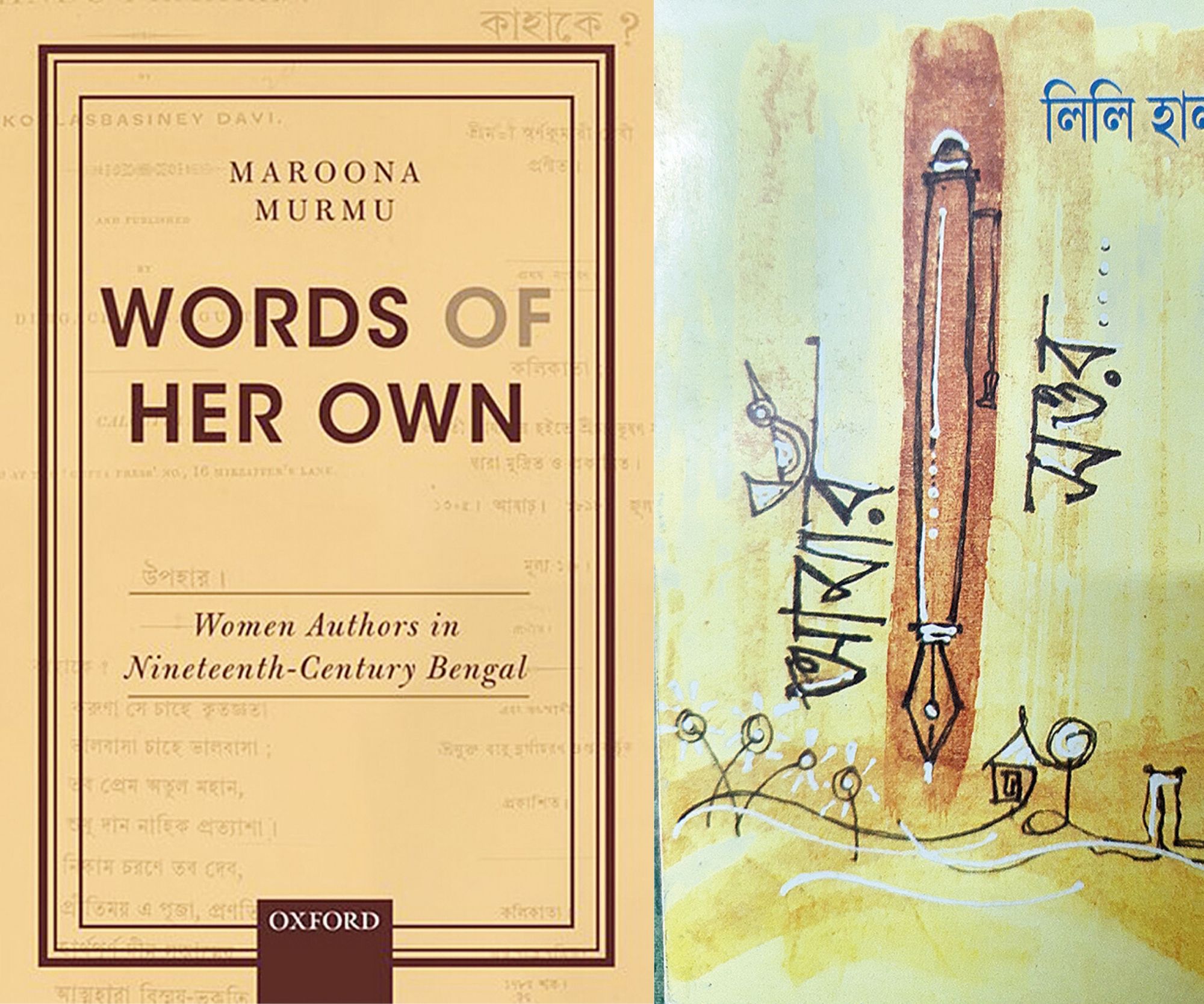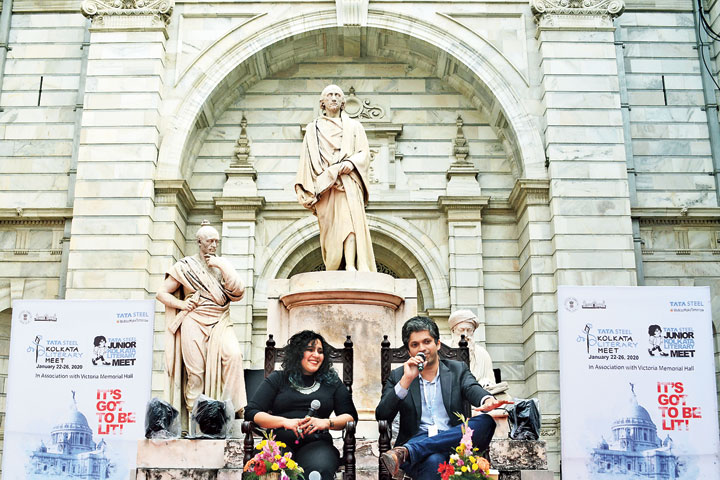Neer is the Bengali word for home. It is also the word for bird’s nest. A magazine by the same name was launched in the early 1990s, and was initially not meant solely to house shared histories and gendered experiences of day-to-day life by Dalit writers. “It began as a wall magazine at the Gariahat Working Women’s Hostel in south Calcutta where I used to stay,” says Neer’s founder editor Kalyani Thakur Charal.
Those days Neer accepted writings by both men and women. The very first issue dealt with the problems of boarders staying in various private hostels across the city. “While casteism was the core issue, we also wrote about water conservation, preservation of indigenous language, folklore, folk traditions and so on,” says Kalyani.
But seven years ago there was a recalibration of priorities and a shift in editorial policy. And Neer became a women’s-only magazine; to be specific, a Dalit women’s magazine. Says Kalyani, “Women are anyway marginalised and Dalit women doubly so. We have to voice our opinion.” She continues, “Besides our approach is different from that of the male writers, and our problems too are of a different nature.”
According to Panchanan Dalai, assistant professor of English Literature at Banaras Hindu University, it is only in the post-Independence era that Dalit writing emerged as a genre to be reckoned with. And even then, there weren’t many women writers. The Dalit woman’s voice was largely unheard when the Dalit Panther Movement started in the 1970s. Two decades later, Chuni Kotal, the first woman graduate among the Lodha Shabars, a Scheduled Tribe of Bengal, committed suicide after being harassed and discriminated against. It was around this time that Neer started its journey.
Among some of the regular contributors of Neer are Kanan Boral and Manju Bala, both social workers; Pallabi Mondal, a housewife; Saptadeepa Adhikari, who works in an NGO; Praneeta Ray, joint secretary of the West Bengal Bahujan Samaj Party; Juthika Pandey, a college professor. Ayesha Khatun is also a regular contributor. She is a social worker engaged chiefly in Birbhum and Howrah districts and in Jharkhand. “I work for the tribals and with the tribals,” she says.

Books by Halder and Murmu, respectively Sourced by The Telegraph
Not to be confused with each other, Dalits and tribals constitute socially and economically marginalised communities that have been granted special status by the Constitution — Scheduled Castes (SCs) and Scheduled Tribes (STs) are entitled to a slew of concessions and reservations, and are the only categories for who seats in Parliament and state legislatures are reserved.
Distributed across India’s demography, the two together comprise a quarter of the population, and often make common cause because of their persisting underprivileged conditions.
Ayesha says it is her endeavour to decimate through her writings all unequal rituals
and practices in society. She writes about the Adivasis who live in the stone quarries of Birbhum, the same whose land has been snatched away by multinationals. And in her short story, Nirjon Niran Toral, she uses the figure of a young Santhal woman called Baha to critique the many-layered caste system and its many hypocrisies.
Another Neer contributor, Maroona Murmu, teaches history at Jadavpur University. She is the second generation in
her family to have received formal education. In her essay titled “Is there no caste discrimination in West Bengal?” she describes another Adivasi professor’s account of how every time her family members brought over harvested grains to upper caste homes, the courtyards would be cleansed with cow dung and gangajal. She writes about how as a child she would be singled out to clean the restrooms of the residential school where she studied.
Murmu’s mother, a Bengali Hindu, married her Adivasi university batchmate. Says Murmu, “Neither the Adivasi community nor the Bengali Hindu society was willing to recognise this marriage socially. So, in my forlorn childhood, the feeling of insecurity was my sole companion.” Her autobiographical works, “Structural Violence of Casteism: A Personal Narrative by an Adivasi University Teacher” and “Jaatibarna Baishamyer Paschimbanga”, published in Neer, are a scathing critique of casteism in Bengal.
In yet another essay she has written about an incident from 2019, wherein Saraswati Kerketta, head of the department of geography at Rabindra Bharati University was allegedly physically and emotionally harassed for being a Dalit. According to Murmu, an enquiry committee was set up by the university which eventually pronounced that there was a possibility that it was indeed a case of caste-based discrimination. Murmu says, “I am forced, as a member of the Santhal community, to expose this skillfully devised myth that caste does not exist in West Bengal.”
Caste was a new concept to Alokananda Roy when she moved to West Bengal in 1962, post her marriage. Says the 79-year-old, “Those days, in our village, Barishal in East Pakistan, everyone was a Namasudra. Social ostracisation was something I had never come across. I came to know about it when I came to India, but more from hearsay and from what I read. That is when I started writing.”
Roy’s writings are about women negotiating caste traps. In one of her stories she writes about a young woman from the barber community. Once she is widowed, she returns to her father’s home and takes up her father’s job to earn a living.
When Neer was conceived, Kalyani had asked everyone to write about their forefathers. She says, “It agitates me to think that the history of our predecessors has not been chronicled. You talk about Vidyasagar and yet no one knows about Guruchand Thakur and Harichand Thakur; they were the greatest influencers and social reformers of their times.” She continues, “In our community, when there was no education, no thought or vision about the future, it was these two men who preached widow remarriage. It was they who started schools for the women of our section, not Vidyasagar. And yet, there is no mention of them in our history books.” Harichand Thakur, who founded the Matua sect, and Ishwar Chandra Vidyasagar were, incidentally, contemporaries.
According to retired Indian Railways employee Lily Halder, this is because Dalit intellectuals followed the oral tradition, leaving a lot of their works and thoughts unchronicled. She says, “Kabigaan was our literature. Our community did not receive the kind of education you need to be able to read and write.” In her poem Kojagori Purnima, Halder writes about casteism being rampant in Bengal’s villages — based on her experience of living in Burdwan’s Dubrajpur village. She says, “In the Bankura-Burdwan area people are very rigid. When I went to a neighbouring village for some work and asked for a drink of water, I was turned away.”
In her autobiography, Bhanga Berar Panchali, Halder narrates how she was harassed and discriminated on the basis of her caste at her workplace too, how her immediate supervisor doubted her educational qualifications and even hinted that she had cleared exams by resorting to unfair means.
“No doubt then that a rebellious mood is the defining feature of the Dalit literature,” observes academic Jaydeep Sarangi who has several publications on the Dalit literary movement in India. “It is not only the corpus of pain and suffering but also a revolt against inhumanity and the age-old cultural rigging,” he adds.
And yet, it is not as if Bengali literature has not dealt with existential issues of the Dalit community; there have been the works of Mahasweta Devi and Tarasankar Bandyopadhyay. Kalyani, however, believes when a Dalit writes about personal angst, it comes from a place of experience that is unique. She says, “Mahasweta Devi and Tarasankar Bandyopadhyay have written about us, but they have not experienced the pain of being treated as untouchables. With all respect to these great writers, I would call their works Dalit daradi sahitya or works of Dalit sympathisers.”
After a point sympathy is rarely enough.












